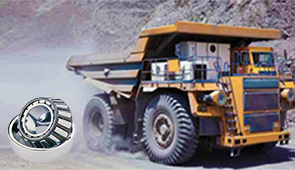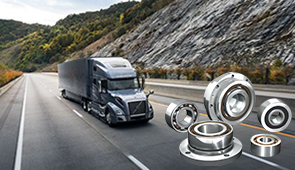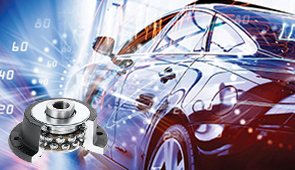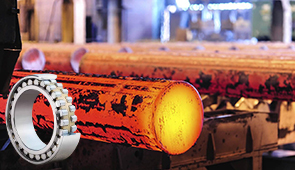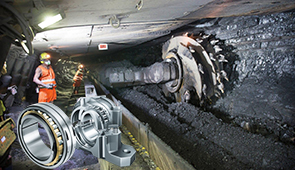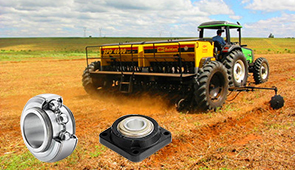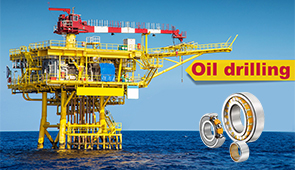Top 10 High-Quality Oil Seal Manufacturers: Ultimate Guide to Rotary Shaft Seals
When it comes to machinery and industrial applications, oil seals—commonly referred to as rotary shaft seals—play a critical role in ensuring optimal performance and longevity. Designed to prevent the leakage of lubricants and block the ingress of contaminants, these seals are essential components for maintaining efficiency and reliability in rotating equipment. Choosing the right oil seal supplier is vital, as high-quality seals can significantly reduce maintenance costs, extend the lifespan of the equipment, and ensure smooth operations across various industries. Whether you’re looking for durability, precision engineering, or innovative technology, this article equips you with the knowledge needed to select the best supplier tailored to your specific operational requirements.
What are High-Quality Oil Seals and How Do They Work?
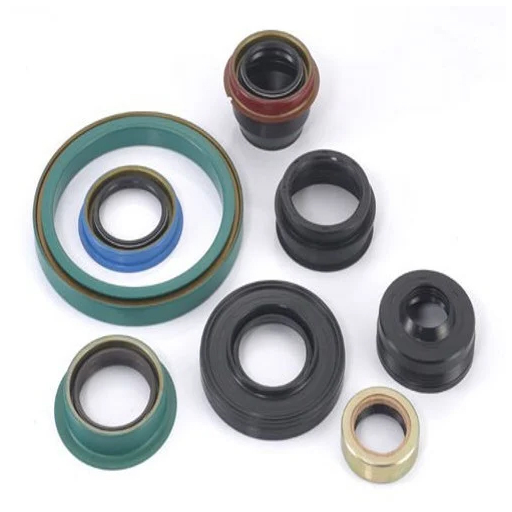
Understanding Rotary Shaft Seals and Their Function
Oil seals, or rotary shaft seals, are imperative in protecting an assembly from lubricant leakage, or the entry of detrimental contaminants like dust and moisture. Their main job is to guarantee the reliability of machinery systems for as long as possible by keeping any intercession out and adequately lubricating the equipment from within.
- Material Choice: Depending on the application, materials for the sealing lip that is subjected to specific temperatures and chemicals may include nitrile rubber (NBR), fluoroelastomer (FKM), or silicone.
- Operating Temperature: Based on the material, good quality oil seals usually work well with a temperature range of -40°F to 400°F (-40°C to 200°C).
- Pressure Resistance: Most common rotary shaft seals will work with a pressure of up to 8 PSI, but certain high-pressure types can be used in some applications up to 150 PSI.
- Surface Finish: The ideal finish of the shaft surface in contact with the seal lip is in the range of 0.2–0.8 μm Ra to seal optimally.
- Shaft Speed: Speed is vital, and seal designs dictate the levels of linear speed that can be supported, which range from 10 m/s to over 30 m/s depending on design and material selection.
By making certain that these conditions comply with operational needs, rotary shaft seals efficiently accomplish their two functions which are protecting internal parts and maintaining effective work in a broad range of industrial activities.
Oil Seal’s Crucial Role in Preventing Lubricant Leakage
Oil seals are important to systems containment from lubricants leaking or dirt entering the machinery. Some of the primary ones are:
- Material Composition: Oil seals are made from specific materials like Nitrile rubber (NBR), fluoroelastomer (FKM), or silicone rubber. Each material has a working temperature range as well as chemicals they are resistant to. Take for example FKM, which can withstand 200 degrees Celsius. This makes it very useful in high temperature settings.
- Seal Lip Design: Combination of the design of the sealing lip and flexibility translates into how much contact pressure will be exerted to how efficaciously the seal will be, but this depends on operational needs. In meeting certain operational needs, either a single or double lip configuration can be utilized.
- Operational Speed: Seal material and design have an impact on the linear movement of the seal. For example, NBR seals tend to work well at 10 m/s, but some superior seals perform over 30 m/s.
- Pressure Handling Capacity: So long as the operating conditions are normal, oil seals should withstand pressures up to 0.3 MPa. Often, added sealing support is necessary for higher pressure.
Oil seals address the factors provided in such a way as to preserve the integrity of lubrication systems and, thus, prevent wear, maintain efficiency, and support longevity across diverse industrial applications.
How to Choose the Best Oil Seal for Your Specific Application?
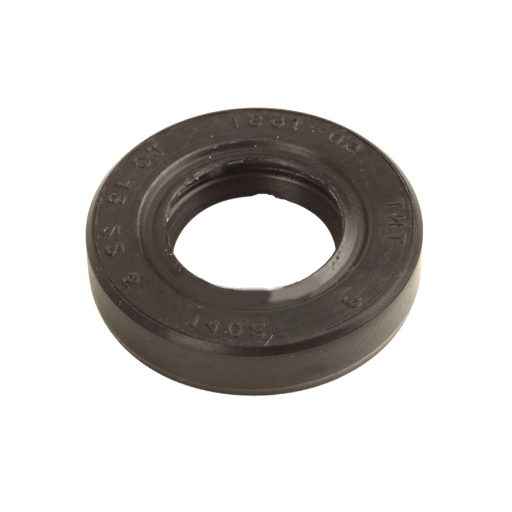
Evaluating Rotary Shaft Seal Styles for Automotive and Industrial Uses
In assessing the appropriate rotary shaft seal for my application, I consider the operating conditions, material, and the seal’s efficiency. In automotive applications, the seal is subjected to high rotational speeds, wide ranges of temperatures, and exposure to dust and fluids. In an industrial setting, more robust seals may be required to withstand abrasion from particles, excessive temperatures, and pressures above 0.3 Mpa.
- Rotational Speed: Operational speed should be supported by the seal design and material and is measured in RPMs. Proper support will help lessen stability issues and wear.
- Temperature Range: Depending on the system, the selected seal will have to tolerate thermal requirements somewhere between -40°F and 400°F (-40°C and 204°C).
- Pressure Resistance: Reinforced designs would be essential for seals rated above 0.3 Mpa and are required for high-pressure environments.
- Material Selection: For general use, I prioritize seals made of Nitrile Ruber (NBR), for chemicals, Fluorocarbon (FKM), and for extreme conditions Polytetrafluoroethylene (PTFE).
- Environmental Exposure: The system’s integrity is maintained as long as the seal provides the required protective barrier against dust, water, and lubricants.
In combining these assessments, it enables an accurate selection which suits the operational and technical criteria of automotive and industrial systems.
Key Factors in Selecting Hydraulic and Pneumatic Sealing Products
To achieve specific goal on selection of hydraulic and pneumatic sealing products, I consider several very important aspects. Initially, pressure rating is pesky; a seal can only work if it can take the system`s highest operating perpendicular force, which in pneumatic systems starts from low pressure of 1000pounds per square inch (psi) and in hydraulic systems go as high as 10,000 pounds per square inch (psi) or more.
Moreover, the thermal limits of the system are very important as well. For high temperature areas (200 degrees celcisi or 400 degree Fahrenheit steam), I pick silicone material stamps, and for extreme cold (-54 degrees celsius or -65F), a silicone stamp can also be used. It is important to make sure the seals apply elastic deformation and do not break above these temperatures.
Seals must have good resistance to destructing fluids within the system such as air with vaporized water, or hydraulic oils. NBR and PTFE seals are perfect seals adapted for standard oils and chemically aggressive environments, respectively.
Finally, I consider the resistance to wear and operating life in dynamic environments. For high cycle or frictional regimes, seals made with specialty Polyurethane or reinforced PTFE compounds specification have a longer service life and lower maintenance intervals.
I can make the selection rational and guarantee that the sealing solution is appropriate for the purpose while ensuring optimum reliability and efficiency by aligning these technical criteria with the system’s operational needs.
What Are Common Problems with Oil Seals and How to Solve Them?
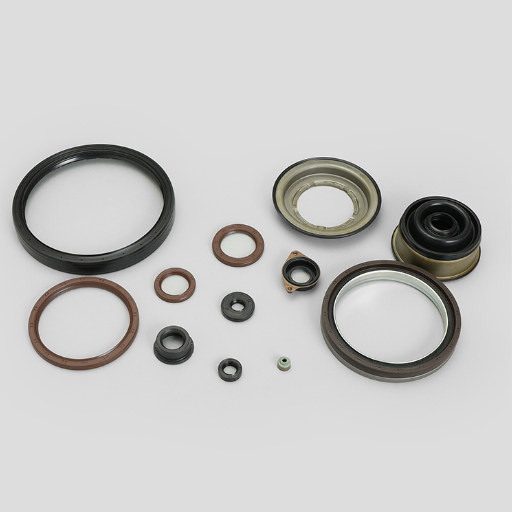
When to Replace Your Rotary Shaft Seal
The timely replacement of a rotary shaft seal is essential for the proper functioning and reliability of the equipment. Rotary shaft seals should be replaced under the following conditions:
- Excessive Leakage: If a noticeable increase in leakage is observed, then the sealing surface is either worn or damaged. These problems usually stem from excessive mechanical friction, inadequate lubrication, or sealing contamination.
- Seal Surface Damage: Examine the sealing lip for signs including but not limited to unnecessary wear, cracks, hardening, or loss of elasticity. Any deformation may hamper the seal’s capability to make proper contact with the shaft.
- Abrasion or Contamination: Exposed disruptive factors such as dust severe lumps or other materials may cause a quick degradation. Such seals will likely require replacement far more often than those in clean environments.
- Thermal Degradation: If the sealing material’s operational temperature exceeds its accepted range(standard elastomers usually between -34F to 250F ), then upon extreme heating, they are likely to degrade, harden, or lose functionality.
- Scheduled Maintenance Intervals: In the absence of damage or wear, seals should still be replaced at necessary maintenance intervals as set forth by a manufacturer’s guidelines to avert potential problems during crucial operations.
Resolving these matters promptly while following the outlined technical specifications will maintain system integrity, minimize downtime, and extend the operational life of your equipment.
Improving Seals’ Resistance to Contaminants
- Selection of Material: In systems that anticipate hydrocarbons and abrasive particulates, seals with high resistance to chemical degradation and particulates such as elastomeric fluorocarbon which has great chemical and temperature resistance within the defined compatibility limits of operating temperatures and pressures alongside other contaminants, should be used.
- Optimization of Seal Configuration: Use of wiper seals or scraper rings or labyrinth seals as protective measures could minimize the chance of contamination. In more critical applications, the risk of contamination could be minimized by double sealing.
- Standards for surface finishing: Apply strict surface roughness values (for the dynamic areas of seals, the average roughness is usually Ra ≤ 0.2-0.4 µm) that should be attained to diminish the possibility of gap formation for contaminants and facilitate movement and minimize wear of seals.
- Lubrication: Use of lubrication oil or grease that is resistant to contamination and helps in deploying protective layers against solid particulates or liquid contaminants and is in line with the operational requisites of the system.
- Controls of the Environment: For seals working in heavily contaminated environments, use protective shields such as dust guards or enclosures as barriers to reduce direct exposure.
- Periodic Seal Inspection and Maintenance: Set up procedures for scheduled cleaning, inspection, and testing of seals to minimize the chances of contamination issues arising. Replace seals that exhibit any signs of wear or contamination before failure happens.
The measures described above will enhance the longevity of the seal system and greatly reduce the chance of contaminant ingress causing system failures.
How to Install and Maintain High-Quality Shaft Seals?
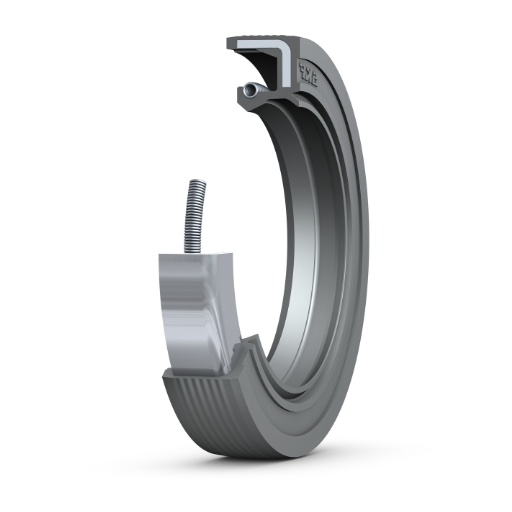
Proper Installation Techniques for Rotating Shaft Seals
For rotating shaft seals, prompt and adequate installation can enhance their performance on multiple fronts in addition to increasing their lifespan.
- Set Up The Installation Site Properly: Scrub the shaft and housing so that they are clean, free from burrs, and smooth. The finish of the shaft must be set to between 0.2 to 0.8 µm Ra on the surface so that damage on the seal lip will not occur in addition to proper sealing being carried out.
- Lubrication: A light application of oil should be placed on the seal lip and the shaft prior to installation with a lubricant that is friendly with the seal material as well the operating environment. Adequate lubrication will take care of too much friction occurring which could result in unwarranted strain during the first rotation.
- Alignment: During installation, make sure that the seal is both centered and aligned with the shaft for ease for both the users as well as the machines. Misalignment would mean blockages on the pathways caused due to severe wear and leakage. Ensure the use of specialized equipment for the installation like a mandrel that will enable uniform seal insertion into the bore with no flaking.
- Avoid Overexerting Force: To avoid damage, or warping to the lip, while the seal is being inserted, make sure that gentle and slow uniform pressure is used during insertion into the housing. The seal design and material dictates the value for the press-in force and care must be taken not to exceed that during insertion.
- Mind The Seal Orientation: Check that the lip is properly oriented – usually, it faces inward to seal liquids – and complies with your organization’s standards like ISO 6194 regulations.
Following these guidelines and fulfilling the conditions set will assist you in avoiding common problems including system leaks, wear and tear, and poor performance.
Maintenance Tips to Extend Your Oil Seal’s Lifespan
- Regular Inspection and Cleaning: Routine audits of the oil seal perimeter and associated parts are critical to check for degradation, contamination or damage. Cleaning of the seal and its housing mitigates the accumulation of materials that may hinder the integrity of the seal, leading to abrasion.
- Monitor Operating Conditions: Check for adherence to the oil seal parameters including temperature, pressure, and RPM. As an example seal material Nitrile (NBR) has a temperature range of -40F to 250F (-40C to 120C), whereas Viton seals can work under extreme temperatures of 400F (204C).
- Lubrication Consistency: Ensure there is enough fluids to reduce the friction occurring on the seals lip at the surface. Over some time, excessive friction due to lack of lubrication may cause heat build up, increased wearing out, and eventually seal failure.
- Prevent Misalignment: Confirm that the tolerances for the shaft and housing alignment are adhered to. Components that do not align effectively create and unequal load or pressure on the seal causing it deformation or leaking.
- Change Parts When Required: Be prompt on oil seal replacement once signs such as cracks, hardening, and lip deviation become noticeable. Check ancillary components such as shafts and bearings as well to effectively tackle the problem during replacement.
Following these practices alongside those dealing with technical requirements ensures that your oil seals are working optimally and will not fail anytime soon.
What Are the Latest Innovations in Industrial Oil Seals?
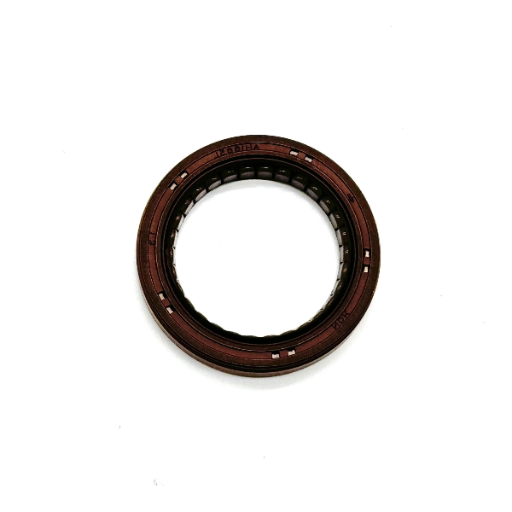
Advancements in Elastomer and Seal Materials Technology
Efforts to enhance the durability, chemical resistance, and extreme condition performance of elastomers and seal materials have progressed recently. For instance, the development of several high-performance materials has been achieved, including fluoroelastomers (FKM) and Hydrogenated Nitrile Butadiene Rubber (HNBR) elastomers. These materials not only provide high reliability under extreme temperatures and aggressive chemistry but also during high levels of mechanical stress. These materials have a longer lifespan and require fewer replacements, which saves money.
FKM is arguably remarkable as far as temperature resistance goes, proving to be stable from -20°F to 400°F, along with being highly chemically stable towards oils, solvents, and fuels. HNBR, on the other hand, is well known for its remarkable mechanical characteristics, specifically tensile strength and resistance to tearing, while working from -40°F to 325°F. These elastomers increase the versatility of oil seals of critical components in many industries like automotive, aerospace, heavy machinery, and other high-performance demanding industries.
Modern industrial oil seals have enhanced reliability and efficiency due to innovations aimed at reducing leakage and improving load distribution, thus, overall sealing performance. These advancements have been achieved through the evolution of manufacturing processes which allows for double-lip and hydrodynamic seals, along with precise molding techniques.
How Modern Seals Are Resistant to Contaminants and Extreme Conditions
Advanced surface treatments and modern materials have been integrated into sealing technology to enhance performance and resilience to extreme conditions while optimally resisting contamination. FKM and HNBR high-performance elastomers demonstrate outstanding durability within harsh temperatures, FKM from -20°F to 400°F and HNBR from -40°F to 325°F. In addition to these temperature ranges, these materials can provide robust sealing in the presence of oils, fuels, and other solvents due to their excellent chemical resistance.
Over the years seals have also incorporated double-lip designs, as they provide further isolation of the working environment while protecting against external moisture or debris. To increase surface wear resistance while reducing friction, advanced coatings such as PTFE or wear-resistant finishes are applied to protect seals from high-pressure or abrasive conditions.
Reinforced backing materials along with precision machining and optimized geometries are used to enhance the structural integrity of seals undergoing extreme conditions. A combination of these techniques ensures modern seals achieve reliability and peak performance when exposed to vibrations, variable pressures, or an environment rich in contaminants.
Frequently Asked Questions (FAQs)
Q: What are rotary shaft seals and why are they important?
A: Rotary shaft seals, also known as shaft seals or oil seals, are mechanical components designed to prevent leakage of lubricants, oils, and other fluids while keeping contaminants out of machinery. They typically feature a flexible lip material that maintains contact with the rotating shaft. These seals are used in virtually every type of machinery that seals hydraulic systems, transmissions, and engines. The importance of high-quality oil seals cannot be overstated as they directly impact equipment reliability, maintenance intervals, and overall operational efficiency in a wide range of industries.
Q: How does Trelleborg stand out among oil seal manufacturers?
A: Trelleborg stands out as a premier manufacturer due to its innovative approach to seal manufacturing and extensive material science expertise. They produce a comprehensive range of rotary lip seals, hydraulic seals, and specialty seals using advanced compounds with superior oil resistance. Trelleborg’s seals are designed with precise lip geometries that minimize friction while maximizing sealing effectiveness. They serve diverse sectors including automotive, aerospace, and heavy industry with custom solutions that often exceed standard oil seals in performance and longevity.
Q: What factors should I consider when selecting a supplier for industrial seals?
A: When selecting a supplier for industrial seals, consider their manufacturing capabilities, quality certifications (ISO 9001, etc.), material expertise (especially for specialized applications requiring oil resistance), and industry experience. Evaluate their custom engineering capabilities if you need non-standard oil seals. Assess their global presence for consistent supply, technical support availability, and warranty terms. Price is important, but the total cost of ownership including seal longevity and reliability should be prioritized. Finally, examine their innovation track record and ability to develop seals designed for emerging technologies and challenging environments.
Q: What are the differences between single-lip and multiple-lip oil seals?
A: Single lip oil seals feature one primary sealing edge that contacts the shaft, offering lower friction and cost-effectiveness for general applications. Multiple lip designs, however, provide enhanced protection with additional sealing points. The primary lip prevents oil leakage while the secondary lips (or dust lips) keep contaminants out. Multiple lip configurations are preferred in severe environments where both oil retention and exclusion of dirt are critical. The design choice depends on factors like pressure requirements, contamination risks, and whether the application needs grease seals rather than fluid seals. Both types can be manufactured with various lip materials to ensure proper performance in specific operating conditions.
Q: What role does the end cap play in rotary shaft seal assemblies?
A: The end cap in rotary shaft seal assemblies serves multiple critical functions. Primarily, it provides structural support and maintains the proper positioning of the seal lip against the shaft. This component helps distribute pressure evenly across the sealing element, preventing distortion during operation. End caps often incorporate features that assist with installation, such as chamfered edges or installation tools compatibility.
Q: How do oil seals differ from gaskets and O-rings in industrial applications?
A: Oil seals (rotary shaft seals) differ from gaskets and O-rings in several fundamental ways. Oil seals are dynamic seals designed specifically for rotating shafts, featuring a flexible lip that maintains contact with moving components while accommodating shaft runout and misalignment. Gaskets, in contrast, are static seals placed between two non-moving surfaces to prevent leakage at the interface. O-rings are versatile elastomeric rings with a circular cross-section used in both static and some dynamic applications but lack the specialized lip design of oil seals. While all three serve sealing functions, oil seals are engineered specifically for rotational motion with features to handle friction, heat generation, and the pumping action that can occur at the shaft interface.
UCTH213-40J-300 with Setscrew(inch)
CNSORDERNO: Normal-duty(2)
TOGN: UCTH213-40J-300
SDI: B-R1/8
SD: 2 1/2
UCTH212-39J-300 with Setscrew(inch)
CNSORDERNO: Normal-duty(2)
TOGN: UCTH212-39J-300
SDI: B-R1/8
SD: 2 7/16
UCTH212-38J-300 with Setscrew(inch)
CNSORDERNO: Normal-duty(2)
TOGN: UCTH212-38J-300
SDI: B-R1/8
SD: 2 3/8
UCTH212-36J-300 with Setscrew(inch)
CNSORDERNO: Normal-duty(2)
TOGN: UCTH212-36J-300
SDI: B-R1/8
SD: 2 1/4
UCTH211-35J-300 with Setscrew(inch)
CNSORDERNO: Normal-duty(2)
TOGN: UCTH211-35J-300
SDI: B-R1/8
SD: 2 3/16
UCTH211-34J-300 with Setscrew(inch)
CNSORDERNO: Normal-duty(2)
TOGN: UCTH211-34J-300
SDI: B-R1/8
SD: 2 1/8









